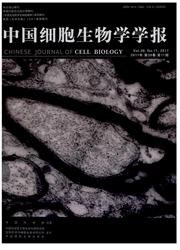

 中文摘要:
中文摘要:
该文通过Time-lapse技术,以无电场作用的人肺腺癌细胞Calu-3细胞为对照组,以分别暴露于电场强度为2 V/cm、4 V/cm和6 V/cm的Calu-3细胞为实验组,研究了外源微直流电场对Calu-3迁移的影响。结果表明,Calu-3细胞可通过单细胞和群体细胞两种形式迁移,直流电场对这两种迁移形式具有显著的影响:无电场作用时,单细胞和群体性的Calu-3随机迁移;加入直流电场后,单细胞和群体性的Calu-3朝向负极定向迁移,迁移方向性指数、迁移方向持续性指数、轨迹速度、位移速度显著高于无电场作用的对照组。电场强度为4 V/cm时,单细胞和群体性的Calu-3趋电性最明显,迁移方向最恒定。相同强度的电场作用下,Calu-3群体细胞迁移的方向性指数和方向持续性均高于单细胞迁移,但单细胞迁移的轨迹速度和位移速度快于群体细胞迁移。
 英文摘要:
英文摘要:
We analyzed the effect of direct current electric fields(dc EFs) on lung adenocarcinoma cells Calu-3 through Time-lapse microscopy. The cells without electric field were taken as the control group. The cells of experimental group were exposed to dc EFs with intensity of 2 V/cm, 4 V/cm and 6 V/cm, respectively. The cells of Calu-3 migrated through two way, including isolated cells and clustered cells. Our data showed that dc EFs had important effect on the migrations of Calu-3. Both isolated cells and clustered cells of Calu-3 moved randomly in the absence of an EF. In the presence of dc EFs with different strengths, both the two type cells migrated toward the cathode electrode of electric field. The parameters of migration ability, including directedness index, persistence index, track speed and displacement speed had significant differences between control and experimental groups. Generally, the dc EFs mad Calu-3 cells possess more obvious directional ability and faster speed. Both isolated and clustered cells achieved maximal electrotaxis in 4 V/cm EFs. The clustered cells of Calu-3 exhibited greater sensitivity to dc EFs but ran more slowly than the isolated cells under EFs with same strength.
 同期刊论文项目
同期刊论文项目
 同项目期刊论文
同项目期刊论文
 期刊信息
期刊信息
